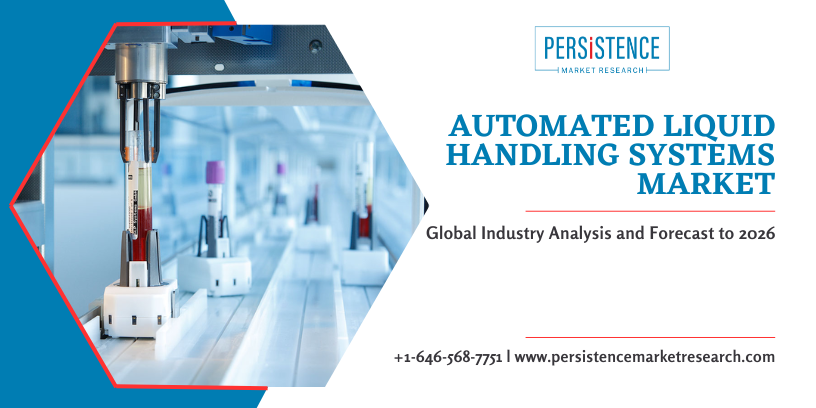Global Market Study on Automated Liquid Handling Systems: North America to Lead the Global Market in Terms of Revenue during 2017 - 2026

Market Overview:
The automated liquid handling systems market refers to the production, distribution, and utilization of robotic systems that are designed to automate the process of liquid handling in laboratories and research facilities. These systems are used to perform various tasks, including sample preparation, assay setup, drug discovery, genomics research, and high-throughput screening. Automated liquid handling systems offer precise and efficient liquid handling capabilities, reducing human error and increasing productivity in laboratory workflows.
Market Size and Growth:
As per the report compiled by Persistence Market Research (PMR), the global automated liquid handling system market is likely to witness significant growth. The market is projected to garner 6.4% CAGR throughout the forecast period. Towards the end of 2026, the global automated liquid handling system market is projected to bring in US$ 1,438.7 million revenue.
The automated liquid handling systems market has experienced significant growth in recent years, driven by factors such as the increasing demand for high-throughput screening, advancements in laboratory automation technology, the need for improved accuracy and reproducibility in liquid handling, and the rising adoption of robotics in the life sciences industry.
Need More Insights on Competitor Analysis of the report, Request for Sample@ https://www.persistencemarketresearch.com/samples/21601
Market Segmentation:
The automated liquid handling systems market can be segmented based on product type, application, end-user, and region.
Regional Analysis:
The automated liquid handling systems market is segmented into various regions, including North America, Europe, Asia Pacific, Latin America, and the Middle East and Africa. North America and Europe dominate the market due to the presence of a well-established life sciences industry, advanced research infrastructure, and favorable government initiatives supporting laboratory automation. The Asia Pacific region is expected to witness significant growth due to increasing investments in healthcare infrastructure, rising research activities, and the growing adoption of automation technologies in laboratories.
If You want to Purchase Specific Insights By Segment/Region/Competitor, Request For Customization@ https://www.persistencemarketresearch.com/request-customization/21601
Market Drivers and Challenges:
Several factors drive the automated liquid handling systems market:
However, the market also faces certain challenges:
Key Players:
The automated liquid handling systems market includes several key players involved in the manufacturing and distribution of automated liquid handling systems. Some prominent players in the market include Hamilton Company, Tecan Group Ltd., PerkinElmer Inc., Danaher Corporation, and Thermo Fisher Scientific Inc.
Market Trends:
If You Want To Know The Business Opportunity/Market Value, Purchase The Premium Insight@ https://www.persistencemarketresearch.com/checkout/21601
Future Outlook:
The automated liquid handling systems market is expected to continue its growth trajectory in the coming years, driven by the increasing demand for high-throughput screening, advancements in laboratory automation technology, and the need for improved accuracy and productivity in liquid handling processes. The market's growth will be influenced by factors such as ongoing technological advancements, the integration of artificial intelligence and machine learning, the expansion of applications in personalized medicine and diagnostics, and the adoption of automation in emerging markets. Continued focus on system customization, user-friendly interfaces, and compliance with regulatory standards will be crucial for the market's future success.
Read More Trending “PMR Exclusive Article”:
Persistence Market Research is a U.S.-based full-service market intelligence firm specializing in syndicated research, custom research, and consulting services.
automated liquid handling systems , laboratory automation , liquid handling technology , scientific research , pharmaceutical industry , biotechnology sector , high-throughput screening , sample preparation , precision and accuracy , market analysis , technological
Jun 07, 2023